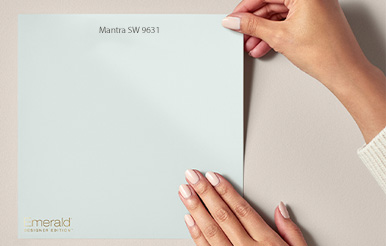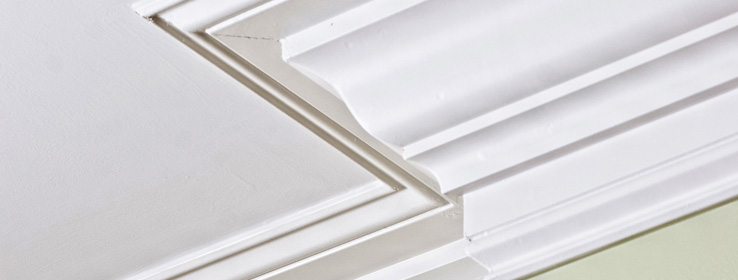At first blush, paint sheen seems a minor design consideration — especially compared with color. But picking the ideal sheen for a paint job involves important visual and functional considerations.
As a practical matter, high-sheen or glossy surfaces are typically easier to keep clean. These paint formulations traditionally produce the toughest and most stain-resistant finishes – that's why high-gloss finishes are common in bathrooms, high-traffic areas and kids' rooms. Aesthetically speaking, sheen or gloss does draw attention to a given surface, especially indoors. This includes even the smallest flaws. If the intention is to hide or downplay a space, high-sheen paint should be avoided.
Most brands of paint come in several sheens, and both latex and oil-based paints are available in different sheen levels. Gloss sheens have the highest light-reflective characteristics. Next are semigloss sheens; then satin, eggshell, or low-lustre sheens; and then flat or matte sheens.
Technically speaking
High paint-resin or binder levels create high sheen, smooth finishes and durable surfaces. (Paint's binder imparts adhesion, binding the pigments together and strongly influencing such properties as gloss, weathering durability, flexibility and toughness.) Conversely, high paint-pigment levels, along with coarse pigment granules, create duller, rougher and less resilient finishes.
Glossed over
Glossy finishes draw the eye – so where should they be used? Contrasting finishes provide a feeling of depth. To achieve a 3-D feel, consider using gloss paint on the trim in a room that has otherwise been painted with a low-lustre or flat paint. Also consider using gloss finishes to help architectural features pop – such as entry doors or trim around ornate glasswork.
Higher-gloss paint finishes can also help brighten dark spaces. Under most common lighting conditions, a combination of semigloss sheen and light-colored paint is an optimal wall covering method to brighten a dark space. (The reason a high-gloss sheen should be avoided in this situation is excessive glare. A dark space requires a lot of artificial lighting, and high-sheen walls catch and reflect all that light.)
Halfway there: satin, low-lustre and eggshell
All of these finishes have a sheen that is between semigloss and flat paints. Satin and low-lustre paints have a slightly higher sheen than eggshell finishes. Paints in this category are warmer and provide a greater appearance of depth than flat paints. They also resist stains better than flat paints.
Striking a flat note
Flat paints, also known as matte paints, are a valuable design tool when used correctly. Because they are non-reflective, they tend to conceal surface blemishes better than paints with more sheen. In a visual sense, these finishes effectively "smooth" walls that are dented or rough. And, since flat finishes actually deflect attention from surfaces, flat paints are a great choice for ceilings or other surfaces you want to downplay.
Unfortunately, stains are often difficult to remove from flat finishes. Unlike paints with higher sheen, a non-reflective, flat paint finish has a porous texture, which can trap dirt and result in burnishing when scrubbed or rubbed. However, there is one notable exception to this rule – Sherwin-Williams Duration Home®. Duration Home, which is available in matte, satin and semigloss sheens, is formulated with patented cross-linking technology that forms a smooth continuous paint film. This cross-linking technology not only locks in the colorants, it also provides superior resistance to staining, burnishing, and water-streaking or -spotting, and ultimately provides superior washability compared with competitive offerings. And it can be tinted to the deepest, most saturated colors your customers want.
One last option: in-between
With four levels of sheen available in most products, designers can usually find a paint finish that matches their vision. But, if a manufacturer's sheen does not work aesthetically for a particular project, consider mixing two sheens together to get a custom sheen or an "in-between finish."









